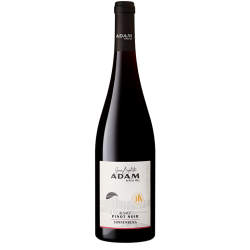For 4 people
Preparation 30min
Cooking 2h
Moderately difficult recipe
INGREDIENTS
For the pea mousseline:
- 200g fresh or frozen peas
- 2 potatoes
- Water
- Salt
- Pepper
- Cream (optional)
For the full-bodied juice:
- 1.25 kg of veal tendrons
- 1 shallot
- 1 onion
- 1 carrot
- 1 sprig of thyme
- 1 bay leaf
- 3cl of oil
- 75g butter
- 50cl of water
- 1l light brown veal stock
For the beef tenderloin:
- 4 beef fillets
- Butter
- Oil
For the pea mousseline
1. Bring a large volume of salted water to a boil. Add the peas and the potatoes cut into quarters. Leave to cook for 15 to 20 minutes.
2. Mix. Season to your liking. You can add a little liquid crème fraîche until the desired texture is obtained.
For the full-bodied juice
1. Cut the meat into pieces of 15 to 20 g. Roughly slice the shallot, cut the onion and the carrot. Click the garlic cloves . Choose an appropriately sized container. It must be able to contain the pieces of meat in a single layer, while being as small as possible to allow the elements to infuse correctly and to limit as much as possible the evaporation of the wetting liquid.
2. Heat the container over high heat. Once hot, add the oil. Add the pieces of meat in small quantities to keep the container very hot and sear the meat. Spread the pieces out on a single layer and let color without stirring. Watch the heat, slightly lower the intensity if the coloring is too fast in some places. Above all, do not blacken the meat, as this will make the juice bitter and / or give it a burnt taste. Once the first side is well colored, turn the pieces over and peel off the juices with a spatula. Turn the meat from time to time using a spatula to ensure even coloring; and peel off the juices to prevent them from burning.
3. Lower the heat, add the butter and the aromatic garnish. Coat the whole well. Cook until the filling is sweaty and begins to brown.
4. Chinese to recover the butter which will have taken the flavors of the meat and the garnish.
5. Place the elements back in the container and wet them up with water. Peel off the juices well, at the bottom with a spatula, and on the edges with a brush. Reduce to dryness over high heat, regularly cleaning the walls with a brush to collect the juices.
6. Once the first water has evaporated and the juices are well removed, wet with the light brown veal stock, unsalted and very cold to facilitate osmosis. Bring to a boil over very low heat and cook for 2 to 3 hours at a gentle simmer, watching the reduction. The cooking time will depend on the power of the fire and the speed of evaporation. You have to stay on very low heat to infuse the flavors well without evaporating the liquid too quickly. Skin regularly as you cook.
7. Pass through fine cheesecloth to remove all the particles. After a well-conducted reduction, the elements remain coated with a thick layer of juices which it is impossible to recover during filtering. It is necessary to rewet. Put the elements back in the container, wet them up with water and bring to the boil. It's just a matter of taking off the juice and recovering all the flavors. Cooking and infusion are finished, this step does not last longer than the time to resume boiling. Pass the rewet in a Chinese over the first juice.
8. Pour the juice into a clean saucepan of the appropriate size for reduction. Reduce heat to very low, skinning regularly. When the juice has a syrupy consistency and coats the back of a spoon, it's ready. Incorporate the butter recovered at the start by winnowing.
For the beef tenderloin
In a pan, put a little butter and oil. Heat over high heat. Once the pan is hot, place the beef fillets previously seasoned. Sear the meat on each side. Be careful with cooking: the meat must remain rare. A few minutes on each side is more than enough.
You just have to assemble your different preparations nicely! Enjoy your meal.


